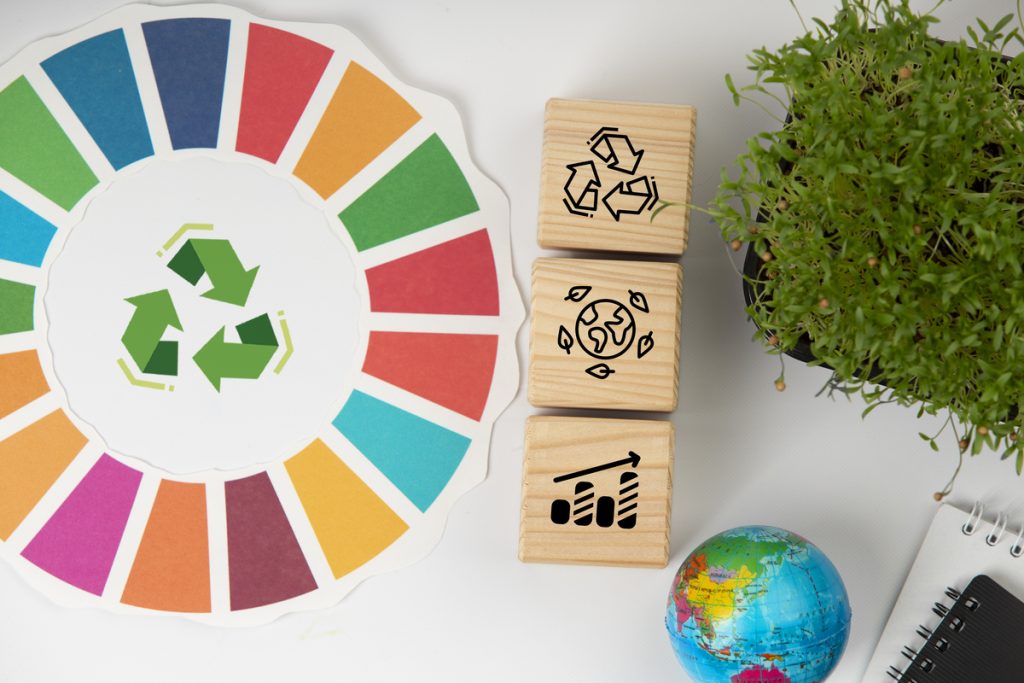The Future Of Print: Eco-Friendly Alternatives

Introduction
The Future of Print- The advent of the digital age has significantly transformed the way we consume and interact with information. With electronic devices and online platforms becoming ubiquitous, traditional print media has faced numerous challenges, prompting us to explore the future of print and seek eco-friendly alternatives. In this rapidly evolving landscape, where sustainability and environmental consciousness have gained paramount importance, finding innovative ways to reduce the ecological impact of printing has become a pressing concern.
Print media, including newspapers, magazines, and books, have long been valued for their tangible nature, offering a unique sensory experience and a sense of permanence. However, the production and disposal of paper-based materials have been linked to deforestation, carbon emissions, and waste generation. As a result, there is a growing need to reconcile our love for print with the imperative to protect our planet.
Fortunately, advancements in technology and the emergence of eco-friendly alternatives are reshaping the future of print. Sustainable printing practices, such as using recycled paper, soy-based inks, and energy-efficient machinery, are already being adopted by environmentally conscious publishers. Additionally, digital platforms and e-books are gaining popularity, offering a convenient and paperless reading experience. These alternatives not only minimize the environmental impact but also open up new possibilities for creativity, interactivity, and accessibility.
In this exploration of the future of print, we will delve into the innovative solutions and eco-friendly alternatives that are revolutionizing the publishing industry. We will examine the benefits and limitations of digital media, explore cutting-edge sustainable printing technologies, and discuss the evolving consumer preferences in the context of environmental consciousness. By understanding the challenges and opportunities presented by the shift towards eco-friendly print alternatives, we can envision a more sustainable and responsible future for the dissemination of information and the preservation of our planet.
How can digital platforms and e-books reduce paper consumption?
Digital platforms and e-books have emerged as powerful tools in reducing paper consumption and promoting a more sustainable approach to information dissemination. By their very nature, digital platforms eliminate the need for physical copies of books, magazines, and newspapers, significantly reducing paper usage. The widespread availability and accessibility of e-books allow readers to access a vast library of content without requiring a single sheet of paper. Additionally, digital platforms offer features like adjustable font sizes, bookmarking, and search functionalities, enhancing the reading experience while reducing the demand for printed materials.
Traditional print media often involves large-scale printing, transportation, and distribution processes, all of which require substantial amounts of paper. In contrast, digital platforms enable instant and widespread distribution of content, eliminating the need for physical printing and shipping. This streamlined approach significantly reduces paper waste and carbon emissions associated with transportation.
The environmental benefits extend beyond paper conservation. E-books and digital platforms also reduce the energy consumption and environmental impact associated with the production of print media. The production of paper involves processes such as harvesting trees, chemical treatments, and energy-intensive manufacturing. By opting for digital platforms, these processes are bypassed, resulting in reduced energy consumption, minimized water usage, and decreased pollution.

What are the environmental benefits of using recycled paper in printing?
Using recycled paper in printing offers significant environmental benefits that contribute to sustainability and conservation efforts. One key advantage is the conservation of natural resources. By utilizing recycled paper, the demand for virgin pulp from trees is reduced, thereby lessening the need for extensive logging and deforestation. Forests play a crucial role in carbon sequestration and biodiversity preservation, making the conservation of these habitats essential for a healthy ecosystem.
By minimizing these resource-intensive steps, the environmental impact associated with paper production, including water pollution and carbon emissions, is significantly reduced.
Paper waste is a significant contributor to landfill volume, and when paper decomposes in anaerobic conditions, it releases methane, a potent greenhouse gas. By recycling paper, this waste is repurposed and given a new life, reducing the amount of waste sent to landfills and the associated environmental consequences.
The production of recycled paper emits fewer greenhouse gases compared to paper made from virgin fibers. Additionally, recycling paper saves energy by requiring less processing, transportation, and manufacturing, further reducing carbon emissions throughout the supply chain.
Choosing recycled paper also sends a signal to the market, encouraging sustainable practices and a circular economy. It supports the recycling industry and helps stimulate demand for recycled products, creating a market for waste materials and promoting a more sustainable approach to resource utilization.
How do soy-based inks contribute to reducing carbon emissions?
Soy-based inks play a crucial role in reducing carbon emissions in the printing industry, offering an eco-friendly alternative to traditional petroleum-based inks. Unlike petroleum-based inks, which are derived from non-renewable fossil fuels, soy-based inks are made from soybean oil, a renewable resource. This fundamental difference leads to significant environmental benefits and a lower carbon footprint.
The production process of soy-based inks emits fewer volatile organic compounds (VOCs) compared to petroleum-based inks. VOCs are a major contributor to air pollution and can have adverse effects on human health. By utilizing soy-based inks, the printing industry helps mitigate air pollution and improves air quality in printing facilities and the surrounding environment.
They have a lower viscosity, which allows for quicker drying times, reducing the need for excessive heat or energy-intensive drying methods. The reduced energy consumption leads to lower carbon emissions associated with the printing process, contributing to overall environmental sustainability.
Soybean farming itself also contributes to carbon reduction. Soybeans are a plant-based crop that absorbs carbon dioxide from the atmosphere during growth. This carbon sequestration process helps offset the carbon emissions associated with the ink production and printing processes. Additionally, soybeans are a rotational crop, often used in crop rotation systems that enhance soil fertility and reduce the need for synthetic fertilizers, further reducing the environmental impact.

What are some innovative ways to make traditional print media more eco-friendly?
There are several innovative ways to make traditional print media more eco-friendly, addressing the environmental concerns associated with paper production, waste generation, and carbon emissions. One approach is the use of sustainable and responsibly sourced paper. This involves opting for paper made from certified sustainable forestry practices or using paper that includes a high percentage of post-consumer recycled content. By choosing environmentally friendly paper options, the demand for virgin pulp is reduced, minimizing deforestation and habitat destruction.
Another innovative approach is the adoption of eco-friendly printing technologies and practices. This includes using energy-efficient printing presses and machinery that minimize energy consumption and carbon emissions. Additionally, implementing advanced printing techniques such as digital printing or print-on-demand helps reduce waste by producing only the necessary amount of copies, eliminating excess inventory and reducing paper waste.
For example, offer a renewable and biodegradable alternative to petroleum-based inks, reducing VOC emissions and improving air quality. Water-based inks are another eco-friendly option that minimizes harmful chemicals and reduces water pollution during the printing process.
How can sustainable printing technologies minimize waste generation?
Sustainable printing technologies offer effective ways to minimize waste generation in the print industry, addressing one of the significant environmental concerns associated with traditional printing practices. One approach is the implementation of print-on-demand systems, which produce copies of materials only when they are specifically ordered. By eliminating the need for large print runs and excess inventory, print-on-demand significantly reduces waste from unsold or unused printed materials. This technology ensures that printed materials are created in a more targeted and efficient manner, minimizing waste and resource consumption.
Another innovative approach is the utilization of digital printing technologies. Digital printing allows for more precise control over the print process, enabling on-demand printing with minimal setup time and waste. Unlike traditional offset printing, which requires printing plates and ink mixing for each job, digital printing eliminates these steps, reducing material waste and chemical usage. Additionally, digital printing enables variable data printing, where personalized content can be printed for individual recipients, further optimizing resource utilization.
By using software tools that streamline the design and prepress process, print files can be optimized for minimal material usage and waste. Waste-reducing features, such as automated nesting or imposition software, help arrange print elements more efficiently on a sheet, maximizing paper utilization and reducing trim waste.

What role does responsible sourcing of paper play in eco-friendly printing?
Responsible sourcing of paper plays a crucial role in eco-friendly printing practices, significantly contributing to the overall sustainability of the print industry. The responsible sourcing of paper involves obtaining paper from certified sustainable forestry practices or utilizing paper with a high percentage of post-consumer recycled content. By ensuring that the paper used in printing is obtained through environmentally responsible means, several positive impacts can be achieved.
First and foremost, responsible sourcing of paper helps combat deforestation. Irresponsible logging practices can lead to habitat destruction, loss of biodiversity, and increased carbon emissions. By opting for paper sourced from sustainably managed forests, the demand for virgin pulp is reduced, minimizing the need for further deforestation and preserving valuable ecosystems.
By utilizing paper with a high percentage of post-consumer recycled content, the reliance on these resources is reduced, leading to lower water consumption, energy usage, and chemical inputs. This reduction in resource consumption directly contributes to the reduction of the environmental impact associated with paper production.
How can the use of energy-efficient machinery reduce the ecological impact of printing?
The use of energy-efficient machinery in the printing industry is instrumental in reducing the ecological impact of printing processes. Energy-efficient machinery is designed to minimize energy consumption and improve overall operational efficiency, resulting in several environmental benefits. One key advantage is the reduction in carbon emissions. Energy-efficient machines require less energy to operate, leading to a decrease in the combustion of fossil fuels and subsequent greenhouse gas emissions. This contributes to mitigating climate change and improving air quality by reducing the industry’s carbon footprint.
These machines decrease the demand for electricity, which is often generated from non-renewable sources such as coal or natural gas. This reduction in energy demand lessens the strain on natural resources and supports the transition to cleaner and renewable energy sources.
Energy-efficient machinery also contributes to cost savings for printing businesses. By utilizing advanced technologies and improved operational processes, these machines often offer higher productivity, reduced downtime, and lower maintenance costs. As a result, businesses can streamline their operations, increase profitability, and allocate resources toward further environmental initiatives or investments in sustainable practices.

How can e-books and digital reading devices help promote a paperless future?
E-books and digital reading devices have the potential to play a significant role in promoting a paperless future by offering numerous advantages over traditional print books. Firstly, the use of e-books eliminates the need for paper production, reducing deforestation and conserving natural resources. According to studies, the paper industry is a major contributor to global deforestation, and transitioning to digital reading can mitigate this environmental impact. Additionally, e-books require no physical storage space, allowing for an immense reduction in the energy and space required for book production, transportation, and warehousing. This leads to a significant decrease in carbon emissions associated with the entire lifecycle of a book.
This not only saves paper but also reduces the energy and transportation costs associated with physical book distribution. Moreover, e-books can be easily updated and revised without the need for reprinting, ensuring that the most current information is always available to readers.
In terms of accessibility, e-books and digital reading devices provide opportunities for a wider audience to engage with reading material. Digital formats offer adjustable font sizes, text-to-speech functionality, and other accessibility features that cater to individuals with visual impairments or learning disabilities. This inclusivity promotes literacy and encourages a broader population to participate in the benefits of reading.
Conclusion
As we navigate the evolving landscape of the digital age, the future of print media is undergoing a transformative shift towards eco-friendly alternatives. The imperative to protect the environment and promote sustainability has spurred innovative solutions that aim to minimize the ecological impact of printing.
From the adoption of recycled paper and soy-based inks to the implementation of energy-efficient machinery and sustainable printing technologies, the publishing industry is embracing practices that reduce waste generation, carbon emissions, and deforestation. Moreover, digital platforms and e-books offer a convenient and paperless reading experience, further contributing to the eco-friendly transition.
The convergence of technology and environmental consciousness has opened up new possibilities for creativity, interactivity, and accessibility in the dissemination of information. While the tangible nature of print media still holds its appeal, the pursuit of eco-friendly alternatives ensures that we can enjoy the sensory experience while being mindful of our planet’s well-being.





